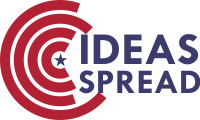Research on Teaching Questioning in High School Geography Classroom Based on Geography Core Literacy
Abstract
As the core of high school geography education, the success of core literacy in geography is closely connected to the design of questions in class. In current teaching, it is hard for fragmented questioning to carry the goals of regional cognition and holistic thinking; Places, detached from life contexts, give geography little practical power in action; And a one-way question and answer mechanism neglects our capacities to penetrate the concept of human-earth coordination. In this paper, we analyse the pain points along the lines of questioning the latest goals, authenticity in context and imbalanced mechanisms of interactions, and then we suggest the following reconstruction of the chain of questions with literacy features as an anchor point: activating spatial thinking through real situations, develop holism through follow up questioning, and deepen human-earth cognition with dynamic feedback. Innovation in classroom questioning does not only mean optimising methodology, it is leap crossing geography education from a knowledge transfer to a literacy generation approach.
References
[2] Demirbaş, İ., & Demir, F. B. (2023). Evaluation of primary school teachers' questioning skills regarding teaching geography subjects according to revised Bloom's taxonomy. Kastamonu Education Journal, 31(1), 87–96. https://doi.org/10.24106/kefdergi.1246431
[3] Enser, M. (2019). Making every geography lesson count: Six principles to support great geography teaching (Making Every Lesson Count series) (pp. 11–14). Crown House Publishing Ltd.
[4] Hong, W., Yong, Z., & Wen, X. (2018). Investigations and research on the professional knowledge literacy of geography teachers in middle schools in China. International Journal of Education and Research, 6(5), 57–72.
[5] Dzhumaeva, M. (2022). The methodology of teaching geography is one of the core disciplines of higher geographical education. Science and Innovation, 1(B7), 1469–1490.

This work is licensed under a Creative Commons Attribution 4.0 International License.
Copyright for this article is retained by the author(s), with first publication rights granted to the journal.
This is an open-access article distributed under the terms and conditions of the Creative Commons Attribution license (http://creativecommons.org/licenses/by/4.0/).








1.png)

















